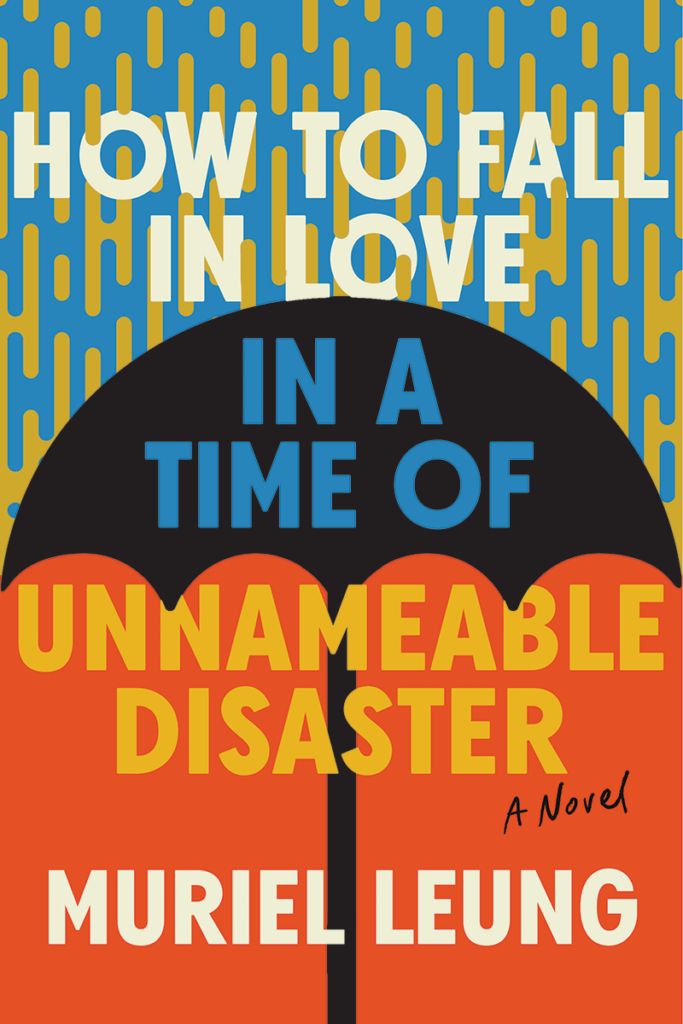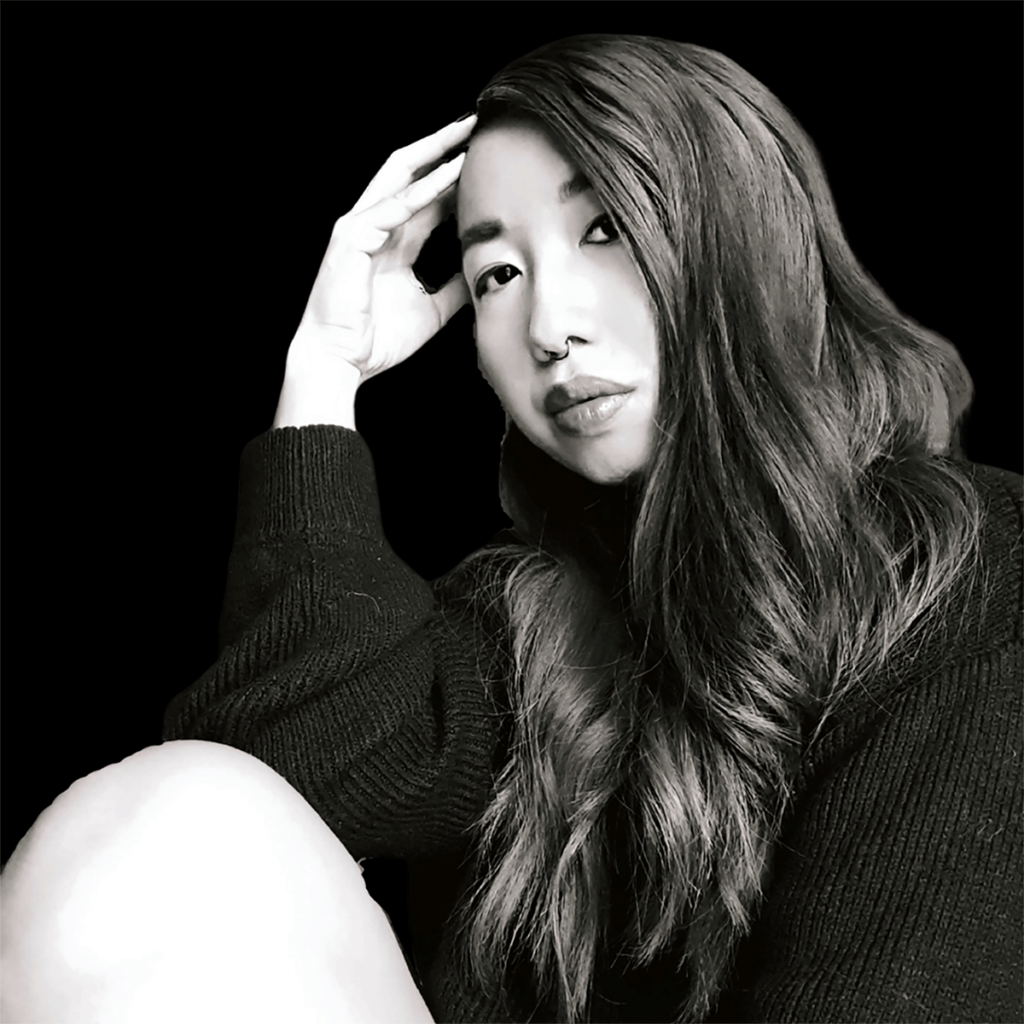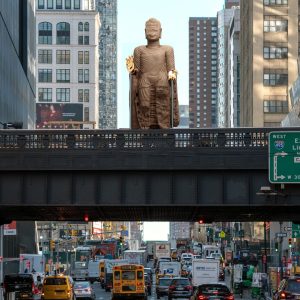Award-winning poet, writer, and School of Critical Studies faculty Muriel Leung is set to release her highly anticipated novel-in-stories How to Fall in Love in a Time of Unnamable Disaster on Tuesday, Oct. 22 through W.W. Norton & Company.
In her latest work, Leung takes readers into a dystopian New York City ravaged by acid rainstorms, transforming the metropolis into a toxic wasteland. The story follows the survival of an unlikely family of humans and ghosts, who must confront what it means to live, die, and love at the end of the world.
Leung is the author of acclaimed poetry collections such as Imagine Us, The Swarm (Nightboat Books), Bone Confetti (Noemi Press), and Images Seen to Images Felt (Antenna), created in collaboration with artist Kristine Thompson. She is a recipient of fellowships to VONA/Voices Workshop, Community of Writers, and Mendocino Coast Writers’ Conference, among others. She also serves on the Board of Directors for Apogee Journal. Leung’s accolades include the 2022 Poetry Society of America Four Quartets Prize and the Nightboat Books Poetry Prize for Imagine Us, The Swarm.
In the following conversation with 24700, Leung reflects on themes of grief and love, and shares insights into the evolution of her forthcoming novel, as well as advice for emerging writers about finding their voice and embracing the creative process.
24700: Could you talk about the post-apocalyptic setting in your story, and about the idea of living with ghosts?
Leung: How to Fall in Love in a Time of Unnameable Disaster is set in New York City during the onset of acid rain storms that happen every Tuesday, which seem to have no end. You can imagine what this kind of interminable natural disaster can do to a people. On top of this, the rapid proliferation of deaths has caused a tear in the line that usually divides the realms of the living and the spirit, leading to a busier and much more crowded coexistence between humans and ghosts. This is where we open with Mira, a young Chinese American girl who has moved back in with her mother during the start of the storms, following a breakup with her girlfriend Mal who is another checkpoint/borough away. Mira shares an apartment with her mother and two ghosts—of a roach named Shin and her Grandpa Why—spectral beings who contribute to the havoc of everyday life.
There’s many ways to tell a queer Chinese American story, a story of immigration, of leaving one country for another. At the heart of all these assorted passages is a story of love and loss, events we all experience to some extent, but in this speculative premise of multiple colliding disasters, I hope to depict a larger sense of longing and presence that permeate through one’s everyday life. A Chinese immigrant to the US can feel both rooted in the States and feel spiritually connected to their country of birth. A queer person can long for their mother to accept their sexuality and also love them despite their limitations. I believe the rain and the ghosts operate with this duality in mind—as the world folds every realm of living and dead together, the possibilities of how we conceive of survival also widen too.

24700: Could you reflect on how you approach grief in your work, and what it means to you as both a personal and creative force?
Leung: I write about grief often in my work, and arguably, I also write about its counterbalance, love. From my first book of poetry, Bone Confetti, to my present novel, I think grief (as well as love) is an inexhaustible subject, one that we can keep turning over and over in our hands and find its shape constantly changing the moment we think we understand it. Grief and love both have such dynamic force to shape time and memory, to plunge us backwards to the past or forward to the future. This force centers death, and in doing so, is also worldbuilding.
Maybe this is a little abstract, but in my classes, I always teach students to take the force of whatever feels immaterial and find the best form that will serve as a container for its magnitude. Don’t tame it, just give it space to grow. I give myself that time and space too, to work through something as big and knotted as grief and love, and I find that the possibilities for whatever shape they make take (be it a hybrid poetry collection or novel) to be infinite.
24700: Did the process of writing this novel take you in unexpected directions, either in terms of craft or the themes you were exploring? How did those unforeseen shifts shape the final work?
Leung: This novel began over 10 years ago in my MFA program in Creative Writing [Louisiana State University] where I was primarily a poet. I took a fiction workshop on a whim and what came out was the titular story of the novel, How to Fall in Love in a Time of Unnameable Disaster. It was intended to be a standalone story, but I realized eventually that it was also a very populated one full of characters who also needed their time and space on the page. I started to write standalone stories from different perspectives, thinking they’d be loosely connected tales, but eventually the world of acid rainstorms and the confinement of the characters to the public housing project in which they reside would pull them back into each other’s lives. I knew then that their stories had to be linked in some way, and it took me many years (I was busy moving from Louisiana to California, finishing my PhD, writing my dissertation, working on multiple books, teaching) to finally piece together the central narrative arc, which is the love story between Mira and Mal as it traversed time, place, and disaster. I don’t believe in linear journeys and apparently neither did this novel. I have no regrets about how it took shape.
24700: Was there a specific moment in your development as a poet and writer where you felt you had discovered or solidified your voice?
Leung: I don’t think I truly discovered or solidified my voice as a writer until probably toward the end of my time as an MFA candidate in Creative Writing. What I’m in awe of is how so many of my MFA students in Creative Writing at CalArts come in with so much energy about what they want to do and how they want to do it. They’re so willing to try something new, to explore, to fail and try again until they get it right. I think I was pretty timid at first, and in the loneliness of my time at my MFA, I decided one summer that I was going to try to publish a book before my time in the program was done. I gathered all the pages of writing I had done and saw that I was short the typical page count for a full-length poetry manuscript, so I spent the rest of those summer months generating a list of poems I would write that would complete this book. What came out of it was Bone Confetti, a poetry collection that was published in Noemi Press by the time I graduated.
Even though I had written a whole book, I still had questions about whether or not that was my true voice or one influenced heavily by the aesthetic interests of my teachers. Over the years, I’ve come to understand that I needed to write this book as a place marker for where I was at a certain time in my development as a writer, and the essence of the work still remains true to who I am—someone who loves morbid subjects, myths, worldbuilding, the uncanny. It’s also a lesson in patience too and trusting the process, one which I try to impart now to my students who may feel the pressures of the publishing world bearing down on them. I never want them to ever feel like they have to alter their voices in this crucial and formative period of discovery in order to service the current market economy of trendy writing. I want them to write something that has lasting value and most importantly, something they can stand by for the rest of their lives.
24700: Can you provide a little overview of the classes you are teaching at CalArts this year?
Leung: This semester, I’m teaching courses that grapple with the fluidity of genre and political expression. In my graduate course The Enduring Long Poem, students are reading book-length poems that explode our sense of what a long poem can be—is it a lyric essay? A serial poem? They all take turns workshopping multiple iterations of their own “long poem” in class, adopting some of the techniques and strategies from the readings.
In my undergraduate class, Ungovernable Subjects; Poetry Against the State, students read theory spanning queer studies, disability studies, critical race studies, and poetry that explore the relationship between language, power, and the state. They are tasked with creating three “obstructions” throughout the semester—public artistic responses that “obstruct” the daily flow of life to draw attention to political issues that are most important to them in this time. The goal of this class is to show that politics and art are always intertwined and the responsibility we have as artists to act in accordance with the responsibilities of such a connection.
And finally, I’m reprising my undergraduate media and literature course, Complicated Girlhoods, where we’re looking at film, novels, memoirs, and poetry collections that explore a diverse range of girlhood narratives from Kai Cheng Thom’s Fierce Femmes and Notorious Liars to Cameron Awkward-Rich’s Sympathetic Little Monster—works that decenter girlhood as belonging to white cisgender women but also encompass trans, diasporic, and multicultural perspectives.



